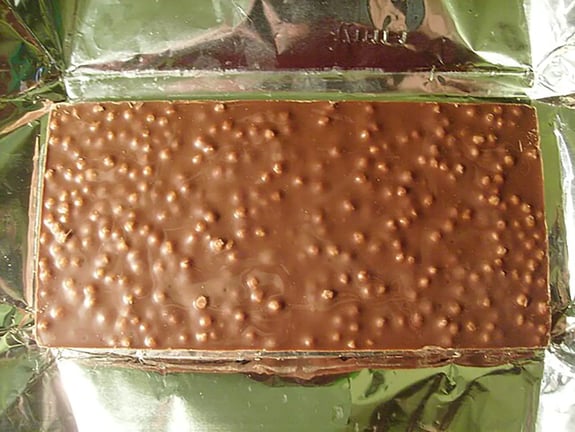- Home
- Articles
- Mouthwatering Dessert Cakes That Need an Introduction via the “M” Trail of the Mother Dough
A look at delicious dessert cakes from around the world starting with “M” from chocolate dessert cakes to delicate fruit cake recipe, you must try

Cakes are one of the simplest yet complex confections in the baking world and yet have the most delish dessert recipes. Their complexity invites storytelling over a cup of tea and what sets them apart from each other. So grab a cuppa and your favorite slice of cake and dig into the stories. So many cakes, too many countries, and too many stories, so here are some of the signature cakes from around the world starting wth “M”.
1. Mađarica
If you can’t pronounce it, try this – Madjarica, which means Hungarian girl and it's hard to say why it's called so. It's a layered cake from Croatia and comes from the era of the Austro-Hungarian Empire and it's one of those cakes that taste the best beside a cup of coffee. One interesting fact about the Croatians and this cake is that they make this cake for a big crowd. The layers of the cake are coated in velvety chocolate cream and finished with a chocolate glaze on top. It takes time to make this cake, baking one layer at a time, as thin as possible, perhaps that's why it is made in such large quantities.
2. Mohnkuchen

Poppy seed cakes are a rarity and Mohnkuchen is a term in German that extends to all kinds of desserts that use poppy seeds in them. But mostly it refers to streusel cakes that have a biscuit crust and a creamy poppy filling with a crumbly topping – streusel. Of course the poppy isn't alone in the cake. Spices, citrus and liquors are added to add flavor and the cakes often have fruit, marzipan and sweet cheese. You will find these cakes throughout Germany and also Austria.
3. Meskouta

A traditional Moroccon cake from A simple and traditional Moroccan cake, Meskouta is made with almonds, eggs, sugar, honey, orange juice, lemon juice, orange flower water, oil, flour, baking soda, and baking powder. The batter is poured into a pan and baked until golden. This orange and almond cake is traditionally prepared in winter when oranges ripen. It's often accompanied by hot mint tea or coffee.
4. Mishka na severe
It started out as a chocolate candy in Russia with a motif of a polar bear on the packet. It's a candy from the Soviet era and over time it was made into a cake. The name Mishka na severe means bear of the north referring to a polar bear. The cake layers are made with flour, sugar, sour cream, butter, cocoa powder, baking soda, vanilla, and salt. The filling between the layers is creamy and is made with sour cream, powdered sugar, and walnuts or hazelnuts. The creamy filling is slathered as on top and the sides and topped with chopped nuts and chilled before eating.
5. Marcinek
Also known as Hajnowski marcinek, Marcinek is a dessert from the Podlaskie region, Poland, consisting of around twenty thin layers of dough coated with cream and stacked like a cake. The tradition of making this cake dates back to the early 20th century. The dough is made from butter, flour, sugar, and eggs, similar to shortcrust pastry. The cream coating typically contains sweetened sour cream, whipping cream, and flavorings like lemon zest, almond extract, or vanilla. Preparing marcinek is time-consuming as each layer is rolled and baked separately. When assembled, the remaining cream covers and decorates the sides and top and garnished with cookie crumbs, coconut flakes, or cocoa.
6. Marillenfleck
A delicate and traditional Austrian apricot cake, Marillenfleck is a coffeehouse staple. It's typically made with apricots, butter, sugar, eggs, flour, baking powder, lemon juice and zest, salt, and vanilla extract. The batter is made by beating butter with sugar, eggs, vanilla, flour, baking powder, salt, and lemon juice and zest. It's spread evenly in a buttered baking pan, and apricots, usually quartered or halved, are arranged on top. After baking until golden brown and cooling, the cake is sprinkled with powdered sugar before being cut into squares.
7. Mézes krémes

This is a Hungarian cake filled with semolina cream and apricot jam and sweetened with honey. It represents typical Hungarian cakes made from kneaded dough and cooked filling and the preparation is tricky. This cake requires to make very thin cake layers, and due to the honey, all ingredients must be heated, and the dough kept warm. After assembling, the cake is refrigerated overnight that makes it soft and mellow.
8. Medovik

Medovik is a popular Russian layered honey cake consisting of honey-infused, almost biscuit-like sponges coated with thin layers of cream. While there are variations, the custard is usually prepared with whipped cream or combinations of condensed milk and butter. It is believed the cake first appeared in the 1820s and was initially created for the wife of Alexander I of Russia. The addition of condensed milk likely originated in the Soviet era, while modern variations may include berries or chocolate. Medovik is traditionally decorated with ground walnuts and commonly served on special occasions.
Like This Article?
More Like This




Popular Articles





Trending Web Stories
Curated Recipes


















